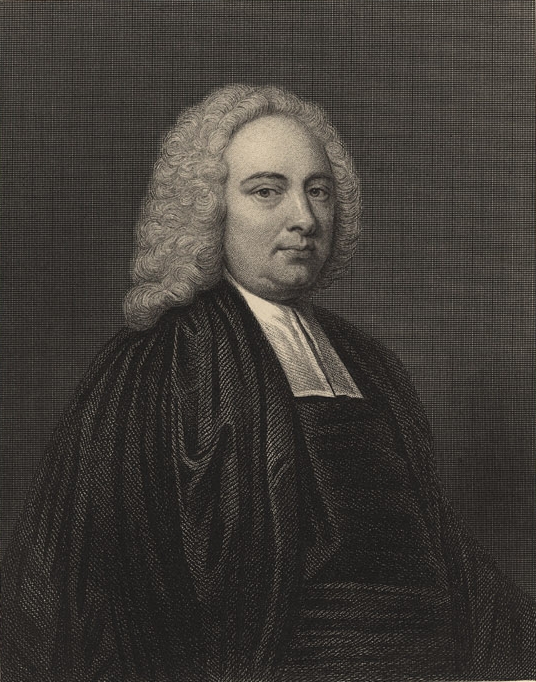- James Bradley
: "This article describes the English astronomer; for other people sharing the name, see
James Bradley (disambiguation) "Infobox Scientist
name = James Bradley
birth_date = March 1693
birth_place = Sherborne, nrCheltenham ,Gloucestershire ,England
death_date = death date and age|1762|07|13|1693|03|01
death_place = Skiveralls House,Chalford ,Gloucestershire ,England
nationality =United Kingdom
field =Astronomy
work_institutions =University of Oxford Ashmolean Museum
alma_mater =Balliol College, Oxford
doctoral_advisor =
doctoral_students =
known_for =Astronomer Royal
influences =
influenced =
prizes =Copley Medal , 1748
footnotes =James Bradley (March 1693 –
July 13 ,1762 ) was an Englishastronomer ,Astronomer Royal from 1742. He is best known for discovering theaberration of light while attempting to detect stellarparallax .cite book |last=Hirshfeld |first=Alan |authorlink= |title=Parallax:The Race to Measure the Cosmos |year=2001 |publisher=Henry Holt |location=New York, New York |isbn=0-8050-7133-4 ]Biography
Bradley was born at Sherborne, near
Cheltenham inGloucestershire , in March 1693. He enteredBalliol College, Oxford , onMarch 15 1711 , and took degrees of B.A. and M.A. in 1714 and 1717 respectively. His early observations were made at the rectory of Wanstead in Essex, under the tutelage of his uncle, the Rev.James Pound , himself a skilled astronomer, and was elected a fellow of theRoyal Society onNovember 6 1718 .He took orders on becoming vicar of
Bridstow in the following year, and a small sinecure living inWales was also procured for him by his friendSamuel Molyneux . He resigned his ecclesiastical preferments in 1721, when appointed to theSavilian chair of astronomy at Oxford, while as reader on experimentalphilosophy from 1729 to 1760, he delivered 79 courses of lectures at theAshmolean Museum .Bradley worked with
Samuel Molyneux until Molyneux's death in 1728 trying to measure the parallax ofGamma Draconis . However, while not finding the expected parallax, they instead found an unexplained motion which shortly after Molyneux's death Bradley realized was caused by theaberration of light . The discovery of the aberration of light which was conclusive evidence for the movement of earth and hence the correctness ofAristarchus andKepler 's theories was announced to the Royal Society in January 1729 ("Phil. Trans." xxxv. 637). This aberration also allowed Bradley to accurately estimate thespeed of light which had previously been shown to be finite by the workOle Rømer and others. The observations upon which it was founded were made at Molyneux’s house on Kew Green. Bradley did not announce the supplementary detection ofnutation untilFebruary 14 1748 ("Phil. Trans." xlv. I), when he had tested its reality by minute observations during an entire revolution (18.6 years) of the moon’s nodes. In 1742, he had been appointed to succeedEdmund Halley asAstronomer Royal ; his enhanced reputation enabled him to apply successfully for a set of instruments costing GB£1,000; and with an 8-foot quadrant completed for him in 1750 by John Bird, he accumulated atGreenwich in ten years materials of inestimable value for the reform of astronomy. A crown pension of GB£250 a year was conferred upon him in 1752.He retired in broken health, nine years later, to the Cotswold village of
Chalford inGloucestershire , where he died at Skiveralls House on13 July 1762 . The publication of his observations was delayed by disputes about their ownership; but they were finally issued by theClarendon Press , Oxford, in two folio volumes (1798, 1805). The insight and industry ofFriedrich Wilhelm Bessel were, however, needed for the development of their fundamental importance.References
Further reading
Rigaud’s Memoir, prefixed to "Miscellaneous Works and Correspondence of James Bradley, D.D." (Oxford, 1832), is practically exhaustive. Other sources of information are: "New and General Biographical Dictionary", xii. 54 (1767); "Biog. Brit." (Kippis); Fouchy’s "Eloge", "Paris Memoirs" (1762), p. 231 (Histoire); Delambre’s "Hist. de l’astronomie au 18e siècle", p. 413.
###@@@KEY@@@###
Wikimedia Foundation. 2010.
